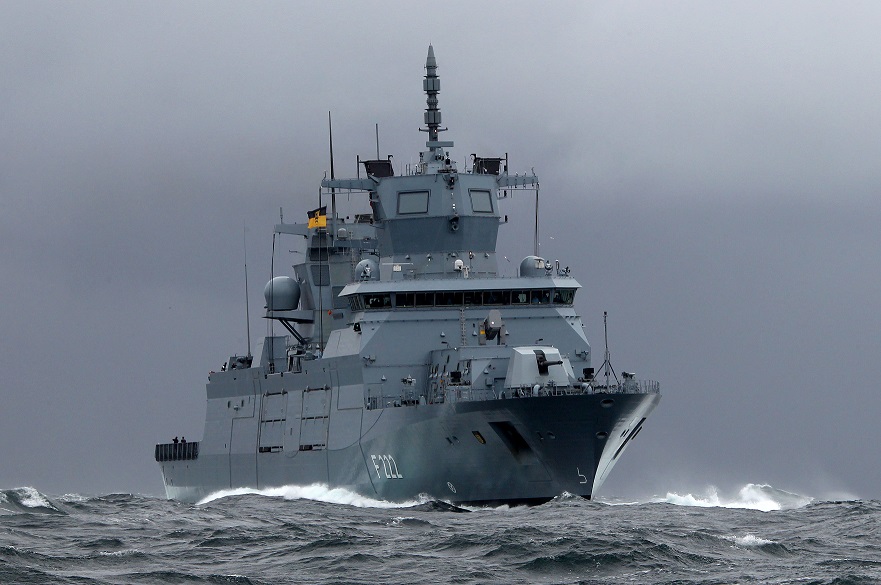
The first F125 frigate, "Baden-Wurttemberg". Image: Thyssenkrupp Marine System
BERLIN (BNS): "Baden-Wurttemberg", the first of the four new-generation F125 class frigates, has officially been commissioned into the German Navy after a delay of about three years over technical flaws.
The warship, built by the ARGE F125 consortium led by Thyssenkrupp Marine Systems (TKMS), entered service on June 17 in the presence of German Defence Minister Ursula von der Leyen.
The contract to build four F125 frigates, worth around two billion Euros in total, was awarded to the consortium in June 2007.
“Around 90 percent of the highly complex systems on board the F125 were specially developed for this new class of ships. Due to this high complexity and the related, different challenges as well as the further modular development of the ship during the project, "Baden-Wurttemberg" was delivered about 3 years after the contractually agreed date,” TKMS said.
The warship was originally slated to be delivered to the Navy in 2016, but it encountered numerous technical problems, media reports said.
With a length of 149m, width of 18m, and displacement of 7,000-ton, the F125 can cruise at a maximum speed of 26 knots and carry a crew of 190. The warship can remain in its operational area for up to two years.
The multi-mission frigate, designed to carry out a range of roles, including peace-keeping missions, counter-terrorism roles and network-centric operations, has been optimised for long-distance deployments.
The second F125 ship, the "Nordrhein-Westfalen" ("North Rhine-Westphalia"), will be ready to be handed over to the Navy in 2019 while the delivery of the 3rd and 4th platforms is expected within the next two years, TKMS said.
The new frigates are set to replace the F122 Bremen class frigates presently operated by the German Navy.
 Previous Article
Previous Article Next Article
Next Article













The Indian Air Force, in its flight trials evaluation report submitted before the Defence Ministry l..
view articleAn insight into the Medium Multi-Role Combat Aircraft competition...
view articleSky enthusiasts can now spot the International Space Station (ISS) commanded by Indian-American astr..
view article